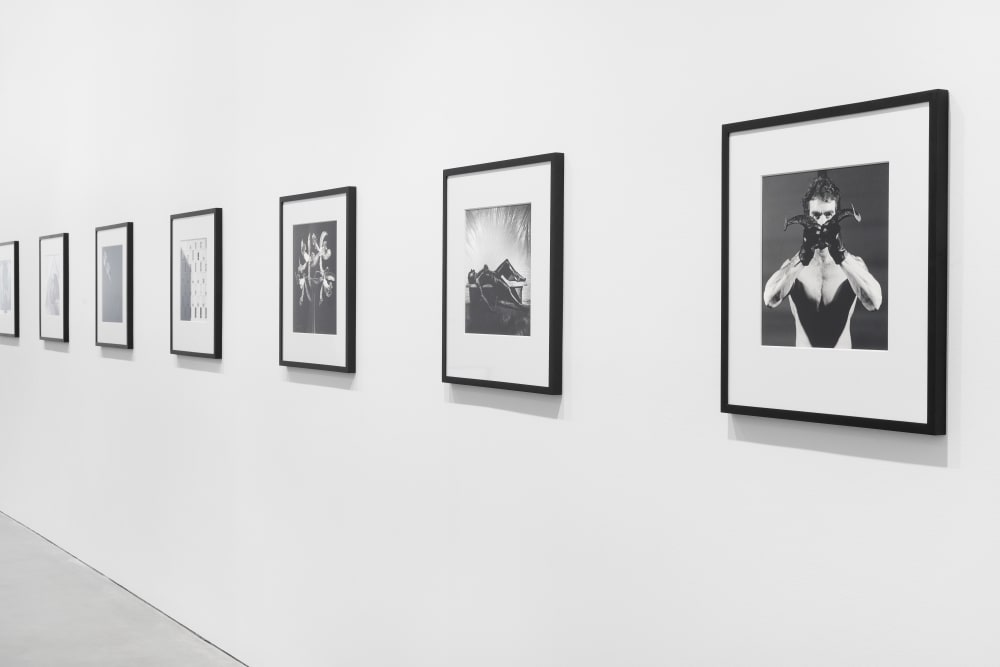Robert Mapplethorpe’s preeminent X, Y, and Z Portfolios will be shown together for the first time in Berlin at Galerie Thomas Schulte. This is the second time the complete suite has been shown together in Germany since 1997. Simultaneously, the gallery presents a large group of Mapplethorpe prints selected by another artist of the gallery, avant-garde theater director and designer Robert Wilson.
Created between 1978 and 1981, these portfolios contain 13 photographs each: ‘X’ features homosexual S&M imagery (1978); ‘Y’ floral still lifes (1978); and ‘Z’ black men (1981). The portfolios reflect three fundamental themes of Mapplethorpe’s oeuvre and at the same time marked a significant moment in American cultural policy in the 1980s, when the artist’s works generated a heated public debate. The exhibition “The Perfect Moment”, which had 8 planned venues between 1988 and 1990, caused a scandal upon its opening at the Contemporary Arts Center in Cincinnati, Ohio in April 1990. Some images from the X Portfolio along with a few other works, outraged the culturally conservative politicians and led to the Contemporary Arts Center’s Director Dennis Barrie be taken to court a few months after Robert Mapplethorpe’s untimely death. Although Barrie was eventually acquitted, Mapplethorpe’s photographs have henceforth been associated with the great public debate on censorship, particularly the representation of homosexuality through photography. The unmistakable black-and-white images, taken with a Hasselblad 500 camera, subsequently triggered a genuine hype and inscribed Mapplethorpe into art history as one of the most popular and important photographers of the 20th century.
The striking photographs captivate viewers with their paradoxically classicist yet strict style while also depicting both challenging and commonplace subjects. Delicate, cut flowers, often rendered with deep shadows (Y), are juxtaposed with homoerotic acts between men (X) and elegant, sculpturally staged black male nudes (Z). From a purely aesthetic point of view, Mapplethorpe approached each motif with the same visual language and with the same aim for perfection. Whether capturing the human body or flora, the flawless, at times dramatic staging, and the artist’s unique compositional rigor alludes to the art historical tradition. For instance, a cabbage is staged just as sensuously as the portrait of a man; a tulip as seductively as human curves. Mapplethorpe explores an erotic and universally relatable aesthetic. How something is photographed is more important than what is depicted. Mapplethorpe was obsessed with the “perfection of form” and aimed for this ideal on all different levels of the image-making process. All the while he created clever and novel compositions, often metaphorically charged and developed a narrative beyond the formal qualities, which made his canonized works of arts masterpieces of analogue photography. The three portfolios are complemented by literary and poetic texts by playwright and translator Paul Schmidt, musician and former lover Patti Smith and the writer Edmund White.













